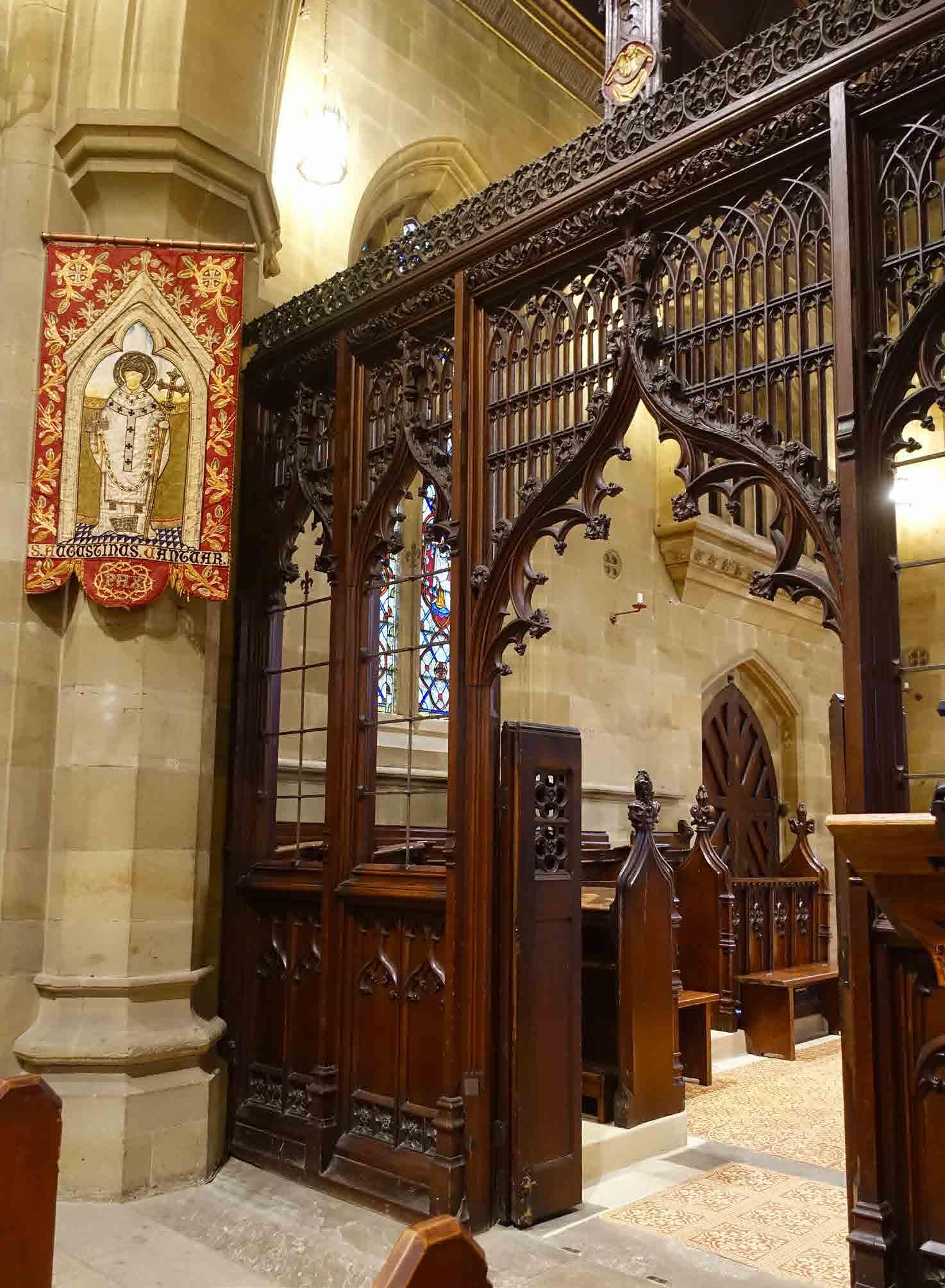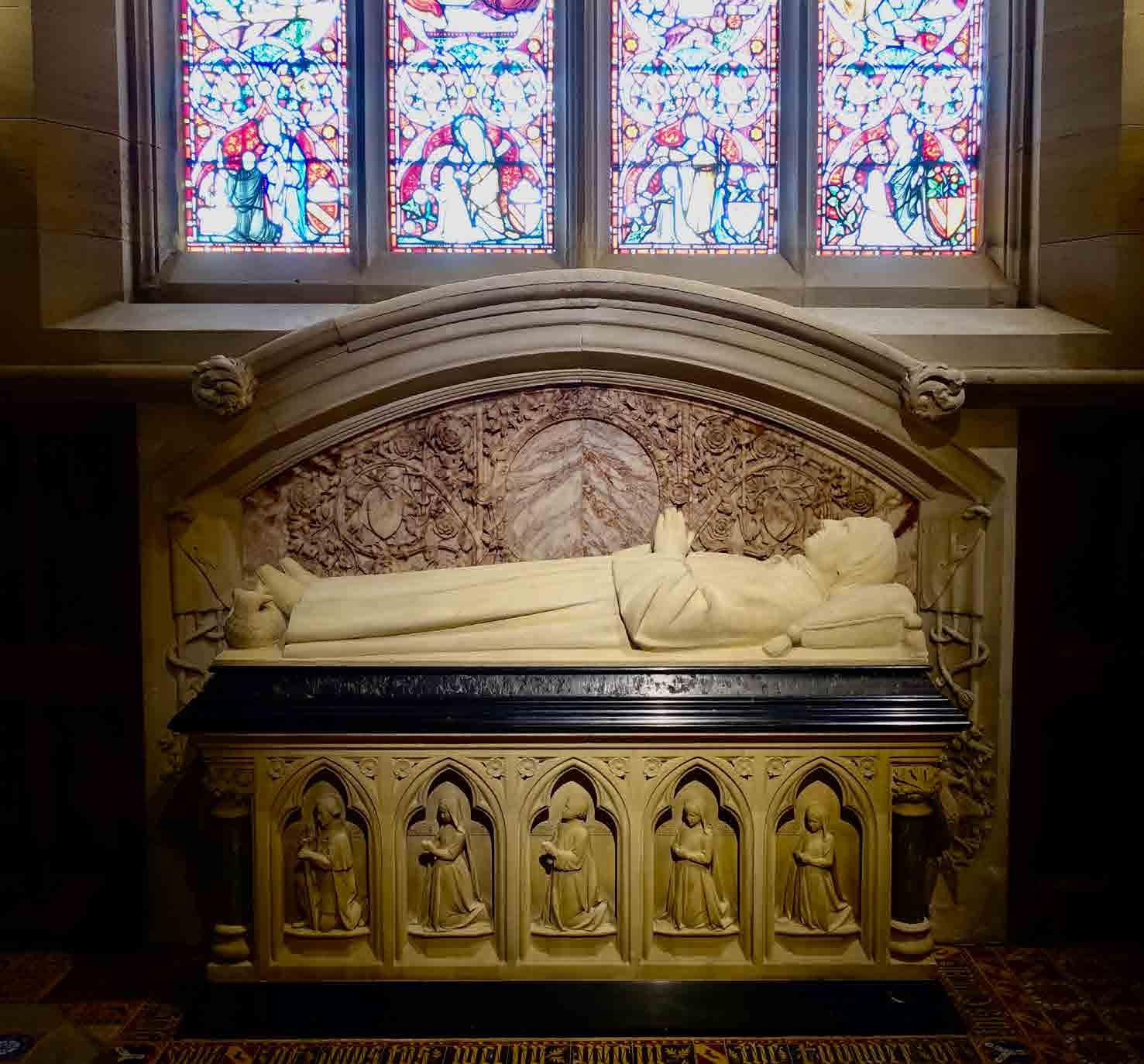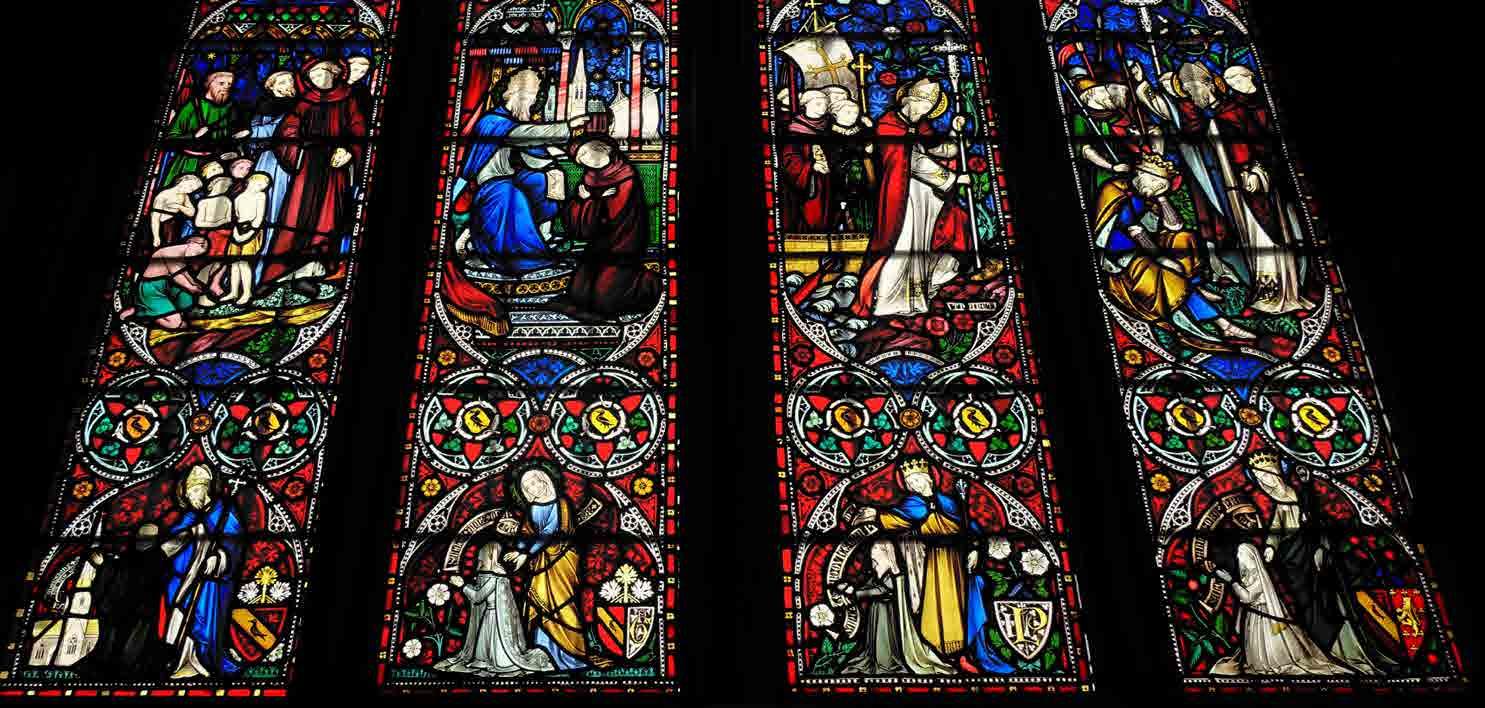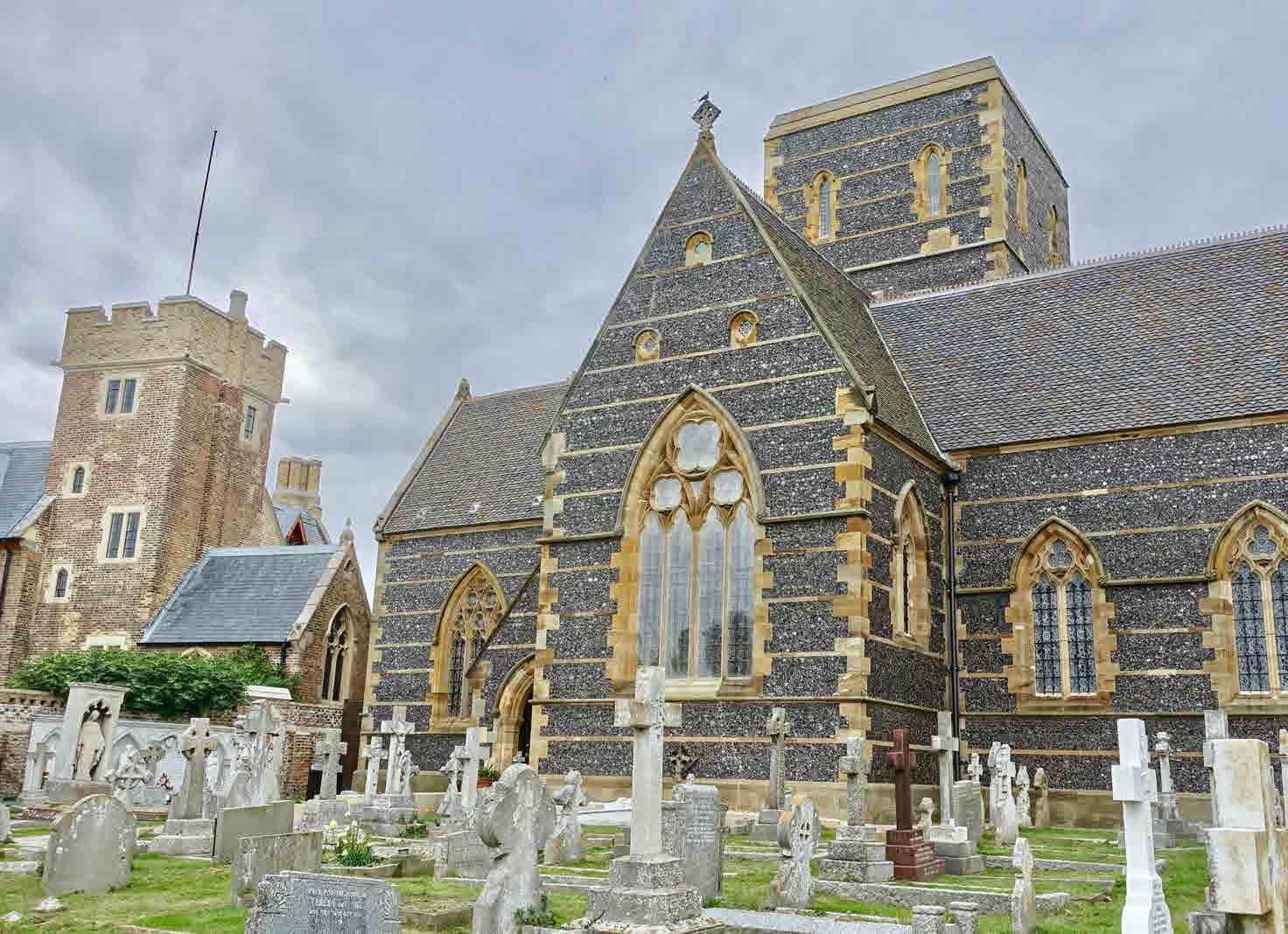
10 minute read
Where St Augustine first preached
John Coverdale reports on a magnificent work of restoration in Ramsgate
(Augustus Press, 14 April 1850)
The Shrine of St Augustine, Ramsgate, built by Augustus Pugin and a notable home for the Extraordinary Form, has recently reopened following a great restoration programme. Ramsgate is a leading light of Tradition and restoration for the Church in England.
On the Isle of Thanet – the beautiful part of Kent that juts out into the sea – the Shrine of St Augustine stands proudly on the cliff top, honouring the great Apostle of the English who arrived near this spot in AD 597. It should be etched in all our memories, that momentous day when St Augustine landed on our shores bringing the Gospel and salvation to the English peoples for the first time. It is here, in Ramsgate, that St Augustine is still venerated today.
“Ramsgate” is a name that, I hope, will become synonymous with the re-evangelisation of England. Just as “Walsingham” summons up England’s ancient devotion to Our Lady, so “Ramsgate” evokes the faith of our fathers which St Augustine first preached here and spread throughout the land.

The rood screen
The Traditional Latin Mass and other Extraordinary Form liturgies are alive and kicking here at this shrine. There is at least one Missa Cantata every week (on Sundays at 12 noon), and sung Vespers every month – more EF Masses are celebrated too throughout the year. We have been particularly pleased in recent years to have the entire Easter Triduum sung by The Victoria Consort, with generous assistance from the LMS. Adding to the liturgical diversity, the Ordinariate Use is celebrated every Friday at 12 noon. The Shrine is within the Parish of Ramsgate and Minster, and Traditional Masses are also celebrated regularly at the parish church too. Although restoration works closed the church over Easter this year, we hope this will be revived in 2018. Similarly, at Christmas and other times through the year, the TLM is celebrated here.
St Augustine’s is set up for the Traditional Latin Mass. Entering the church, you see right down the nave, and your eyes are drawn to the huge crucifix – the physical memorial of Our Lord’s Passion – surmounting the beautiful rood screen. Beyond, you can see the choir stalls, and, right at the east end, elevated by steps, the high altar, itself bedecked with a fine tabernacle, a silver-coloured crucifix and candlesticks which glint in the light (designed by Pugin and made by his collaborator John Hardman), all beneath the vivid greens, blues, reds, and golds of the majestic east window. Here the priest and server regularly go up to the altar of God. Incense is burned, sonorous Gregorian Chant is sung, and all the rites and rubrics of the Traditional Mass give glory to God.
The building itself seems to draw you upwards, with its rising gothic arches lifting up your eyes and soul towards the heavens. The soft-yellow Whitby sandstone ashlar walls give the impression of a richly-built house of God, especially in candlelight. The sea air lingers amidst the fragrant incense, bringing freshness and health inside.

Pugin's Tomb
As a bishop once remarked to me, with a smile and breathing in deeply, when visiting St Augustine’s, “It just smells so Catholic.” None of this is an accident.
In fact, St Augustine’s is reinstating once-derided traditional beauty, with generous help from many private donors, charitable trusts, and a substantial grant from the Heritage Lottery Fund. The cost of the current project is around £1.1 million.
How can I have got so far in this article without mentioning the founder of this church, the great architect and leader of the Gothic Revival, Augustus Welby Northmore Pugin?
Augustus Pugin is a name that should be on the lips of every Catholic in England. He was born in 1812, the son of a French architectural draughtsman (Auguste) and his Lincolnshire-born wife (Catherine née Welby). He became one of the most influential architects and designers of the nineteenth century, championing Catholicism and the Gothic style in everything.
He grew up in Bloomsbury and at the age of 15 designed furniture for George IV for Windsor Castle, some of which survived the 1992 fire and is still part of the Royal Collection. Pugin married three times, with two wives predeceasing him. He had eight children, including three sons who all became architects. Pugin died in 1852, aged just 40 years, but it was said that he had lived two lives in the space of half one.
By the time Pugin died in Ramsgate, he had designed all or part of more than 200 buildings, countless interiors, and furnishings, ceramics, metalware, tiles, windows, and more which continue to inspire designers today. His own house (The Grange, next to St Augustine’s in Ramsgate) became a model of new ways of thinking about domestic architecture. He led the Gothic Revival, transforming it from a pastiche movement to an architectural vision that spread around the world.

Stained glass in the Pugin chantry
His centre of operations became Ramsgate. Pugin poured his heart and soul (and around £20,000 – a fortune in today’s money) into honouring the arrival of the Apostle of the English, St Augustine, with this church.
“It is worth working all one’s life for – to see a real church with all its fittings in the Isle of Thanet – the cradle of Catholicism in England,” Pugin wrote in 1849.
Until earlier this year, the sanctuary of St Augustine’s was a 1970s re-modelling of Pugin’s original. At that time – surely the 1970s and 1980s was one of the greatest iconoclastic times in the Church’s history? – the original altar was destroyed, the choir stalls were moved to cover the altar’s original position, the rood screen was removed, and a new simple and plain altar (a mensa on legs) was put right at the western end of the sanctuary. This has been reversed, and the original design has been recreated, using (as far as possible) the original elements.
Pugin has a growing fan base. From the exhibition at the Victoria and Albert Museum in 1994 (curated by TV antiques expert Paul Atterbury), to the publication of the masterful biography by Rosemary Hill in 2007, the celebrations of the bicentenary of his birth in 2012, and now the revival of St Augustine’s itself, Pugin’s profile is rising. There have been great conservation efforts by the likes of Margaret Belcher, Michael Fisher, Gerard Hyland, Tim Brittain-Catlin, Brian Andrews, Bishop Geoffrey Jarrett, Martin Bressani and many others. Pugin’s fame is sure to expand even further now as the Palace of Westminster – of which he designed so much, and with little contemporary credit – continues. More and more people are recognising Pugin’s genius.
Most importantly, Pugin counted St Augustine’s as his greatest achievement. “I defy any man to examine St Augustine’s without prejudice and not to acknowledge that it is the revival of the true thing,” he wrote, and again, “Watch the church, there shall not be a single True Principle broken.”

The altar front
He said that building a church was the greatest thing a man can do, and that is precisely what he did in Ramsgate. For the greater glory of God, he created this ideal church where God could be worshipped according to the ancient rites of our Holy Mother the Church.
Pugin passionately believed in the Mass and the liturgical space. Under the influence of Dr Rock he designed many spaces for the Sarum Use. The recent “Pugin Week” festival in Ramsgate featured a talk by Gerard Hyland on this subject, and how Pugin’s designs changed over time to accommodate Tridentine liturgy too. Pugin believed that England could be Catholic again, but only if it realised that it was once a Catholic country. This, he believed, would be brought about by the resurrection of English rites, such as the Sarum Use. He wrote to his friend Clarkson Stanfield in 1842, “…our ancestors were not Roman Catholics , they were English Catholics & of course in communion with Rome. [W]e have had an English church from the days of Blessed Austen … we are of the old school of our Edwards, Anselms, Thomass [sic] Englishmen to the backbone.” There was no question in his mind that the Church of England was not part of the Catholic Church – no ‘branch theory’ for him! – but he lamented that English Catholics were losing their own history and, with it, the possibility of making England a Catholic country again. He wrote fondly of hoping one day to see a Catholic procession entering Salisbury Cathedral.
It was the Latin liturgy that he saw as the great act of worship and purpose of his churches. His writings such as True Principles of Christian or Pointed Architecture and Present State of Ecclesiastical Architecture are tours-deforce in re-finding the true meanings, purposes, and uses of different areas of a church. Here in Ramsgate he put that all into use, writing, “here the Catholic faith first took root … [and is] where the old rites may be celebrated - in ancient splendour”.
St Augustine’s, then, is a model liturgical space. Here one of the greatest Catholic ecclesio-architectural minds expressed the pinnacle of his thoughts and abilities. Here you find true tradition in the very stones.
And this tradition is alive! Many Mass of Ages readers may recall the visit of HE Raymond Cardinal Burke to Ramsgate in March 2015, with the accompanying procession of prelates, clerics, professed religious, knights, and lay servers making up the most impressive liturgy at St Augustine’s Shrine since the Reformation – possibly not even surpassed at the pre-Reformation shrine in Canterbury. But it is not all pomp: Low Masses and simple Missae Cantatae are celebrated in the Shrine frequently, sometimes even privately by just a priest and server, in much the same way that must have happened throughout the penal years and in the majority of Catholic parishes during the nineteenth and twentieth centuries.

The sanctuary viewed from the nave
The Latin Mass Society has been integral to the provision of Traditional Latin Masses at St Augustine’s. The Shrine is incredibly grateful for the generous support from the LMS, which is doing so much to support, grow, and encourage the faith at the very place where the faith was first brought to our shores.
Now, following the major works, 2018 will mark a sea change with the liturgies celebrated in the restored chancel for the first time. Although this phase of restoration has been completed, there is still more to do. Firstly, we need an altar. The original altar was destroyed in the 1970s, so we are commissioning a replica. Any help with the costs will go to this excellent cause. We are also in the final stages of having the organ repaired, and a new console made, for which we need financial assistance. There are more roofs to mend, windows to repair, and outreach to be undertaken, and, of course, our daily running costs.
St Augustine’s is kept open by a loyal and active set of volunteers, but we need extra support. I ask you to help in two ways: firstly, please pray for us. We need your prayers both for continued success at Ramsgate, and for the faith in England. Secondly, please consider joining the Friends of St Augustine. This is our group of supporters who donate in many ways for our projects and to keep St Augustine’s open. You can join by emailing office@ augustineshrine.co.uk or see our website www.augustine-pugin.org.uk
“I wish you could see the service at St Augustine’s. Everything sung in plain chant & and in the chancel by choristers in surplices – it is quite the old thing revived,” Pugin wrote in 1849. I wish you could too. Ramsgate is just 75 minutes from London by train, making this a wonderful opportunity for a day trip or a weekend away on pilgrimage to honour the Apostle of the English. May St Augustine intercede for us and our country as we continue to proclaim our faith. In the words of Pugin’s motto, Forward – “En Avant”!
St Augustine’s is open 10am - 4pm every day. For more information call 01843 606756, or see www.augustinepugin.org.uk
John Coverdale has recently been appointed to the staff of the Catholic Bishops’ Conference of England and Wales to work on historic churches. He has worked on the restoration and revival of St Augustine’s for the past three years.

The Chapel and The Grange
Photos by Antonia Robinson










